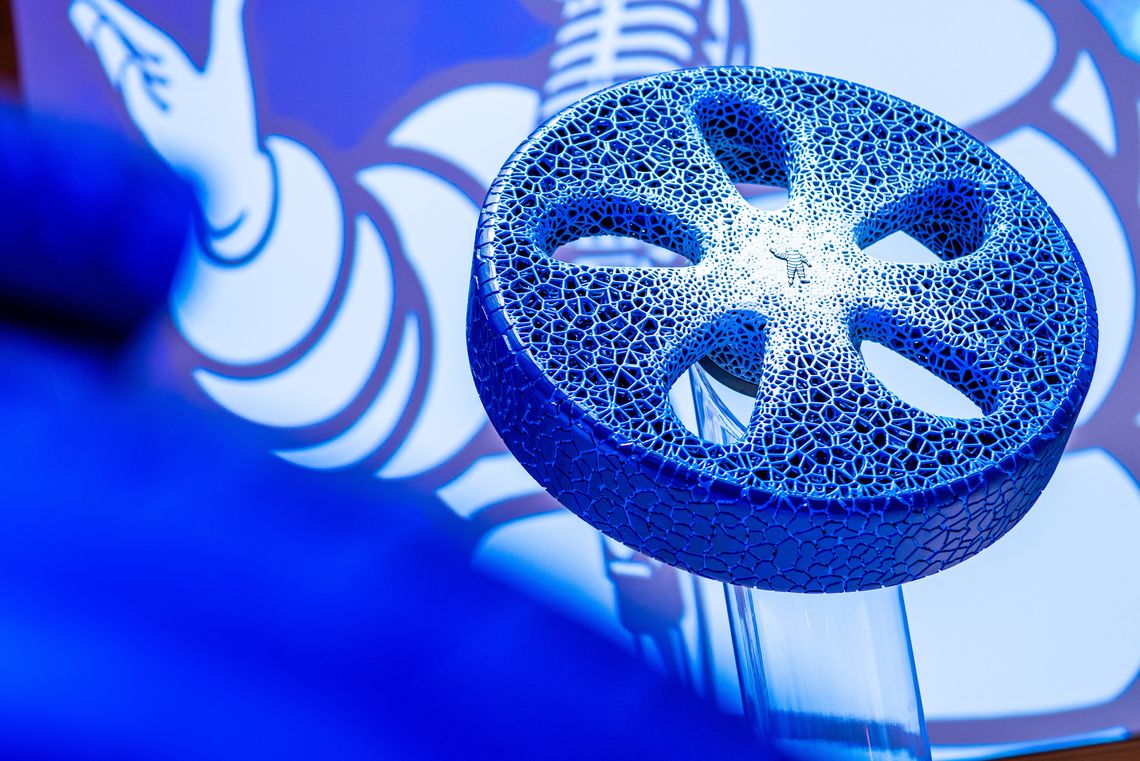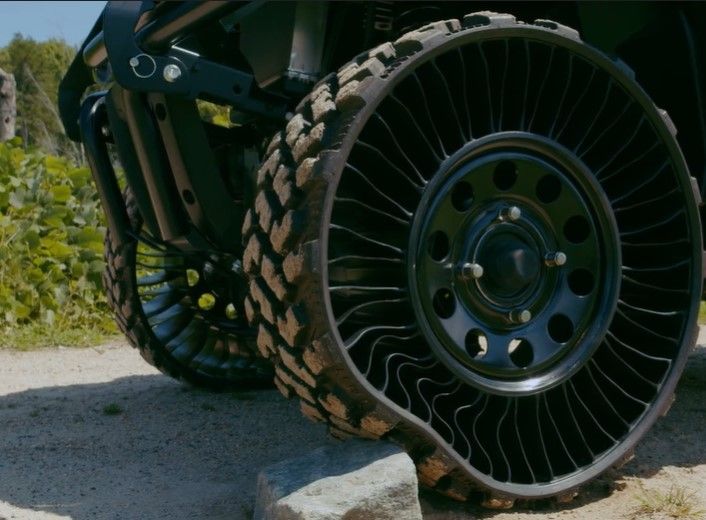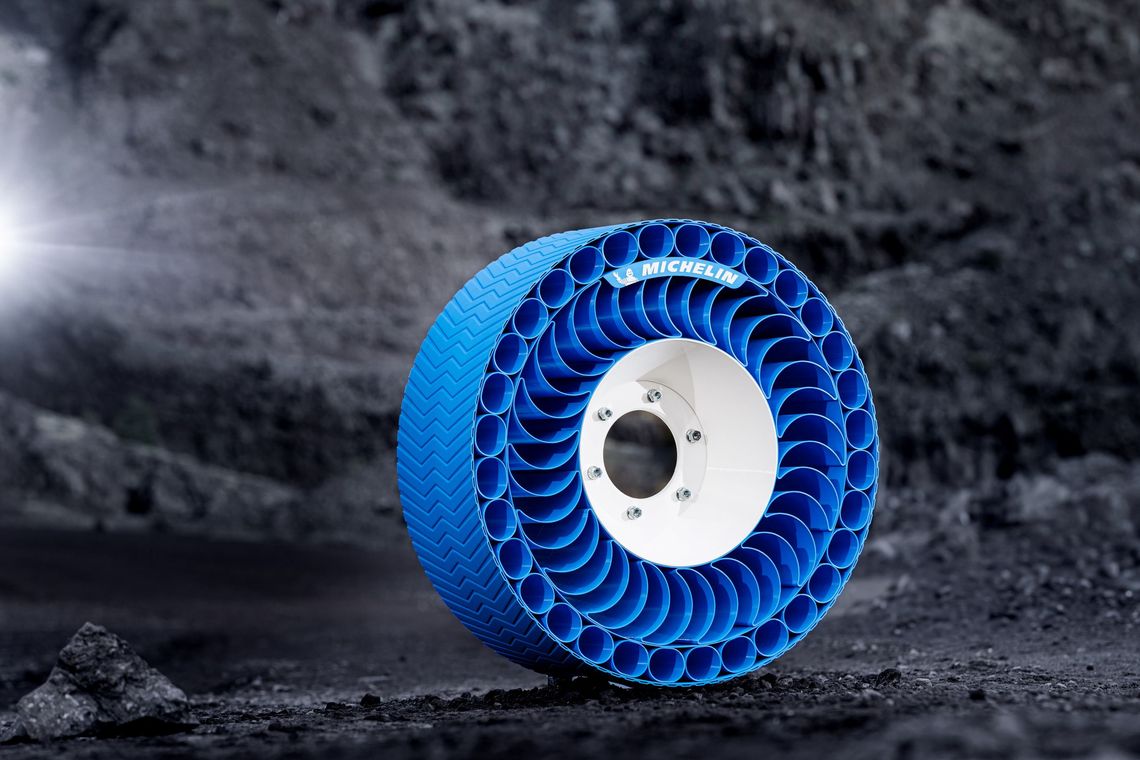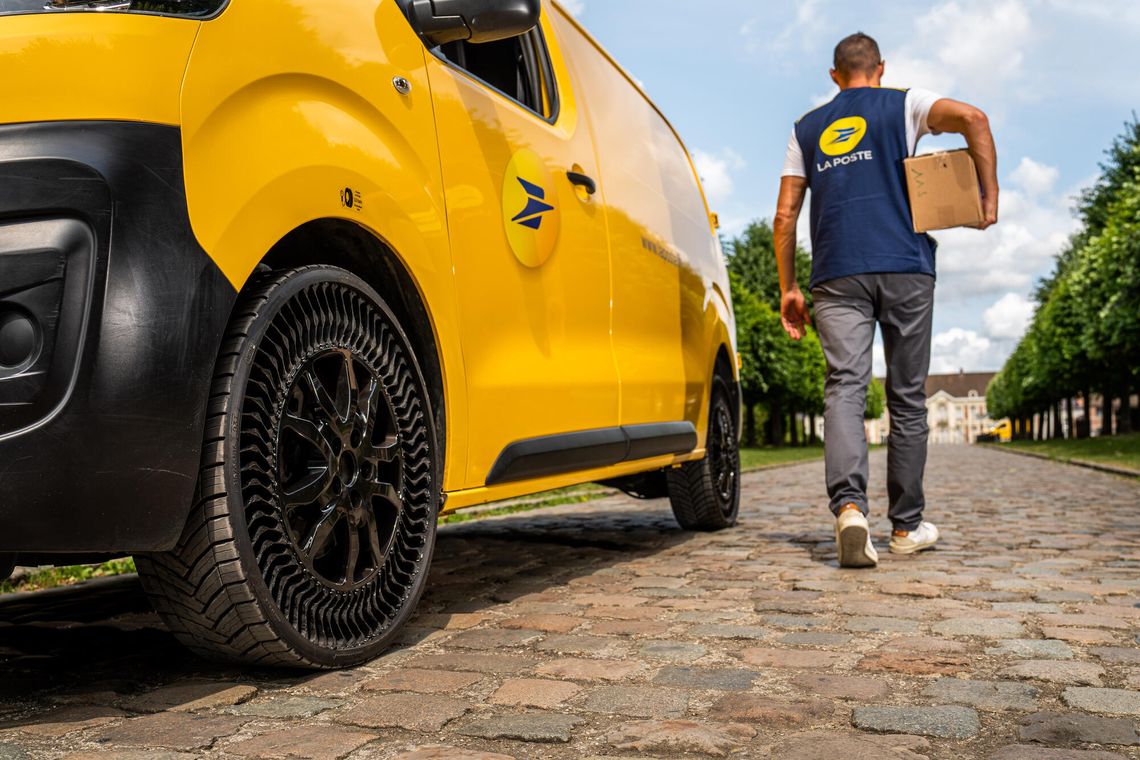Michelin, leader in AIRLESS technology
For Michelin, airless mobility is an essential milestone on the road to more sustainable mobility. The Group has launched an ambitious research program to speed up the development of AIRLESS technology. Michelin’s technological leadership is already apparent in a number of applications including space exploration.
Potential loss of control of the vehicle, lower productivity due to vehicle downtime, premature tire replacement .... these are just some of the many consequences of a flat tire impacting people, business and the environment. Michelin strongly believes that AIRLESS technology has a role to play in making mobility even safer and more efficient by combining excellent performance with lower environmental impact. To achieve this, Michelin can leverage its innovative power and indepth knowledge of the properties of materials, in particular composites.
From the “VISION concept” to “AIRLESS” technology - expertise boosted by passion
The VISION concept was unveiled by the Group in 2017 as a sustainable development model for tires. The four main characteristics of this model are AIRLESS technology, connectivity, the use of renewable or recycled materials and a tread that can be recharged on demand. With AIRLESS technology, the air is replaced by a revolutionary load-bearing structure securing wheel stability and guaranteeing a comfortable and safe ride. What lies behind such an amazing feat? Michelin has developed distinctive know-how in the design and production of innovative materials based on materials science. Expertise in composite solutions built on the ability to blend materials of very different types is a major differentiating factor and allows Michelin to be best in class in AIRLESS technology.

The various benefits of AIRLESS technology
Tweel, Uptis, Michelin Lunar Airless Wheel… three AIRLESS solutions for three separate applications
TWEEL, AIRLESS technology applied to construction and handling machinery

Did you know?
TWEEL is a portmanteau of tire and wheel clearly illustrating that it is a combination of the two. This innovation saw the light of day at the Michelin Research Center in Greenville, South Carolina.
Uptis, AIRLESS technology applied to cars and light vehicles
Did you know?
At the end of 2023, the UPTIS prototypes in circulation had already driven more than 4.5 million kilometers.
AIRLESS technology applied to the lunar wheel
2 Michelin’s fellow members in the team coordinated by Intuitive Machines include AVL, Boeing and Northrop Grumman.

Did you know?
This is not the first time Michelin has collaborated with the NASA. For 30 years - from 1981 to 2011 - Michelin was the exclusive supplier of tires for the main landing gear and the front auxiliary landing gear of NASA space shuttles.
The number of tires which would no longer be wasted thanks to UPTIS = the equivalent of 200 Eiffel Towers in weight.
Temperature difference which the lunar wheel has to be able to withstand
So, is the Holy Grail within sight? Michelin’s unique innovative power has been responsible for numerous disruptive innovations which have revolutionized the history of mobility: the removable tire, the MICHELIN Guide, road signs, the Radial tire, the fuel-efficient Energy tire etc. By leveraging its unparalleled know-how in materials and constantly overcoming challenges, the Group has already acquired leadership in AIRLESS technology and is ready to make a dream come true: making flat tires a thing of the past.
